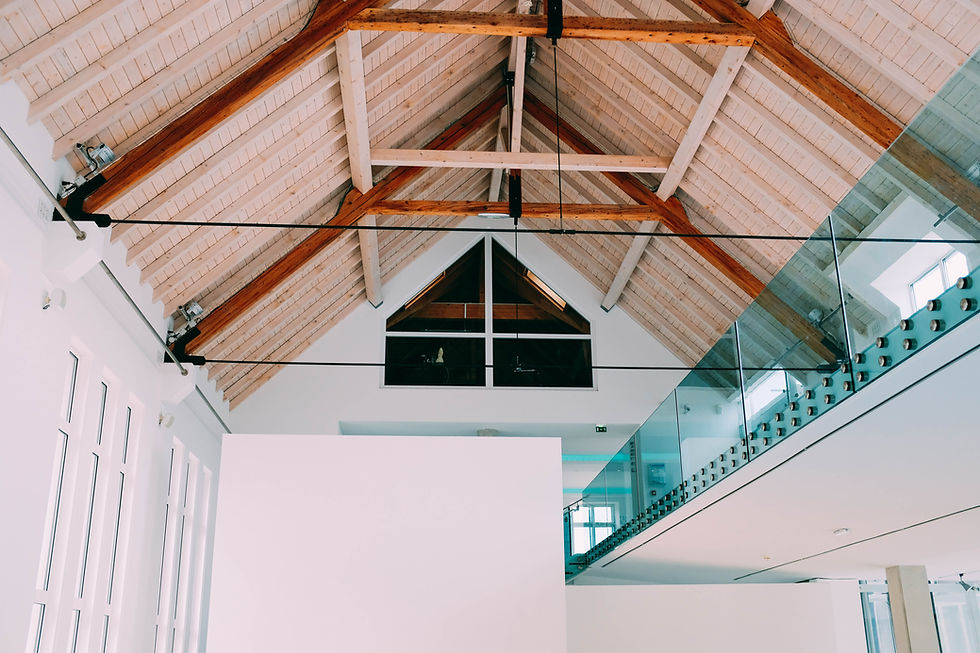How to Renovate a Rental Property Without Overspending
- John Shaw
- Jul 21
- 3 min read
Investing in a rental property can be a rewarding venture, but keeping renovation costs under control is crucial to maximising return on investment. Whether you're refreshing a buy-to-let flat or upgrading a larger family home, smart planning is the key to successful and cost-effective results. From a budget-friendly loft conversion to practical kitchen renovations, this blog explores how to improve your rental without overspending.

Set Clear Renovation Goals from the Start
Before picking up a paintbrush or calling in contractors, define your renovation goals. Are you aiming to increase monthly rental yield, attract long-term tenants, or simply improve energy efficiency?
Knowing your end goal will help you decide which upgrades are essential and which can wait. For instance, a loft conversion may not be necessary for a short-term rental but could be a great investment in a long-term family let.
Focus on High-Impact, Low-Cost Improvements
It’s not always about grand design. Minor upgrades can make a huge difference when managed properly. Focus on areas that tenants use every day—like kitchens and bathrooms.
Kitchen renovations don’t need to involve ripping everything out. Replacing cabinet doors, updating lighting, and installing modern worktops can dramatically improve appeal without excessive cost.
Similarly, bathroom remodelling doesn’t have to mean a complete overhaul. New tiles, better ventilation, a fresh coat of paint and updated fixtures can transform the space at a fraction of the price.
Use Loft Conversion as a Value-Adding Strategy
If the budget allows, a loft conversion can add a significant amount of usable space and value to your rental property. It’s a smart way to create an additional bedroom or office without extending the property’s footprint.
While initial costs may seem high, especially compared to basic cosmetic work, the long-term benefits in rental income and resale value can justify the investment. For multi-tenant properties or HMOs, a well-designed loft conversion could also help you increase occupancy capacity, thus boosting profit.
Consider Garage Conversions Over Extensions
When deciding between home extensions and garage conversions, the latter often provides a more cost-effective alternative. Converting a garage into a habitable room can add much-needed space without the complexity and expense of building a full extension.
Garage conversions are ideal for creating a utility room, a home office, or even an additional bedroom. Plus, many garages already have existing connections for electricity, which keeps costs down. In comparison, home extensions tend to be more expensive due to foundation work and planning permissions.
Invest in Renovation Services That Offer Long-Term Value
While DIY might save money in the short term, poorly executed work can be more expensive to fix later. Hiring professionals for core renovation services like plumbing, electrical updates, and structural changes ensures safety and compliance with regulations.
Look for contractors who specialise in rental property upgrades, as they’re more likely to understand your need for cost-efficiency and durability. Materials should be functional and easy to maintain, rather than overly luxurious.
Don't Overdo It with New Build Standards
It can be tempting to renovate your property to new build homes specifications. However, most tenants aren’t expecting a brand-new, show-home finish. Focus instead on clean, modern, and practical updates.
Keep design neutral and opt for durable finishes that are easy to clean. You’ll save money on materials and avoid alienating potential tenants with overly stylised interiors.
Property Refurbishment on a Budget
A good property refurbishment doesn’t have to drain your savings. Repainting walls, replacing worn flooring, and updating light fixtures can create a refreshed appearance without major costs. Prioritise visible improvements that enhance first impressions, such as entryways and communal areas.
If the property has dated features such as old-fashioned wallpaper or carpets, removing them and opting for a minimal, modern design will instantly boost appeal.
Energy Efficiency = Long-Term Savings
While not always the first consideration, energy-efficient upgrades can reduce your property’s running costs and appeal to eco-conscious tenants. Upgrading insulation, especially during a loft conversion, can help cut heating bills and improve the EPC rating.
Other low-cost solutions include installing LED lighting, draught-proofing windows and doors, and fitting energy-efficient appliances during kitchen renovations.
Plan, Budget and Track Everything
Before starting any project, create a detailed house renovation plan with cost estimates. Build in a contingency fund for unexpected expenses, usually around 10–15% of the total budget. Keep track of every cost and compare it against your forecast regularly.
Using cost-effective platforms to find quotes for renovation services or property refurbishment can also help you stay on top of expenses.
Final Thoughts
Renovating a rental property doesn’t mean breaking the bank. With smart planning and strategic upgrades like a loft conversion, garage conversion, or simple kitchen renovation, you can significantly boost your rental income and attract quality tenants.
Focus on improvements that matter most to renters, avoid over-customisation, and work with professionals who understand the rental market. Whether it’s a modest property refurbishment or a more ambitious home extension, investing wisely ensures you get the most out of your property without overspending.



Comments